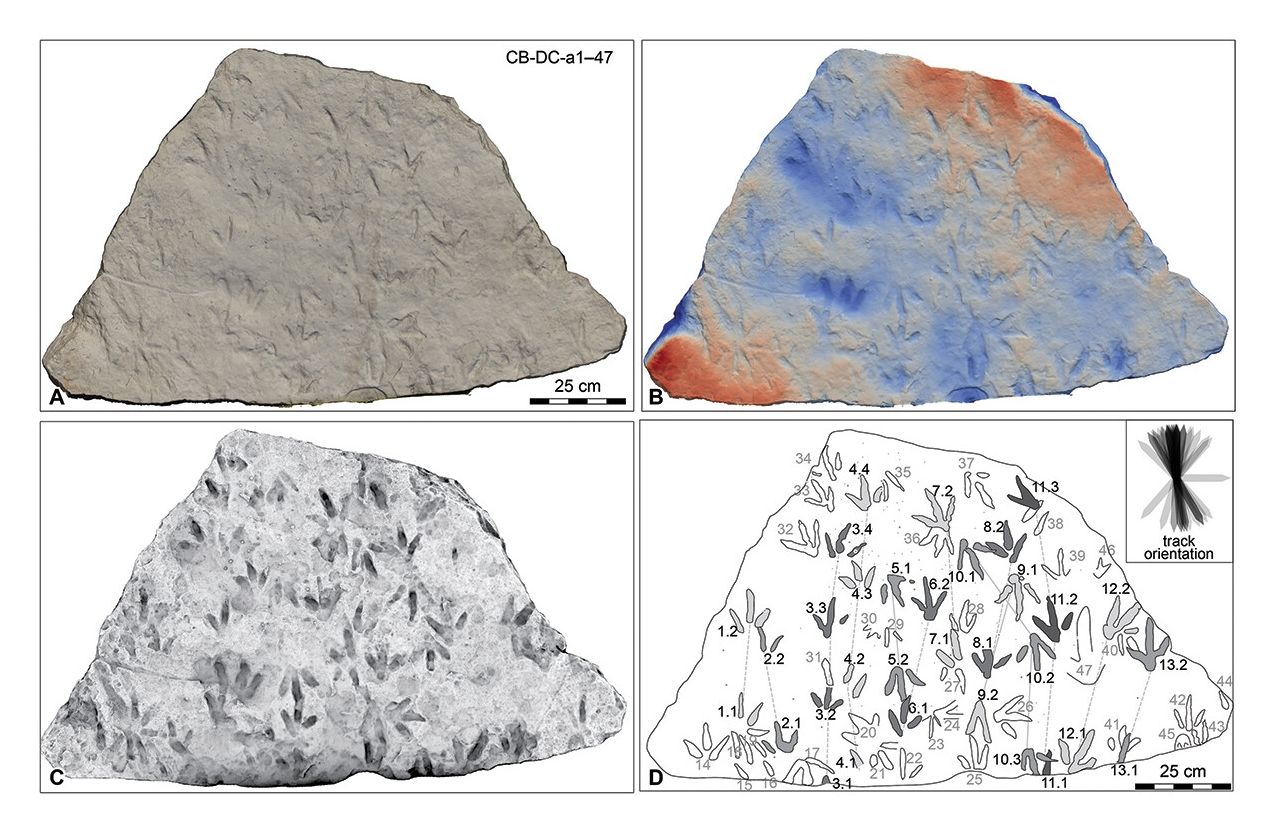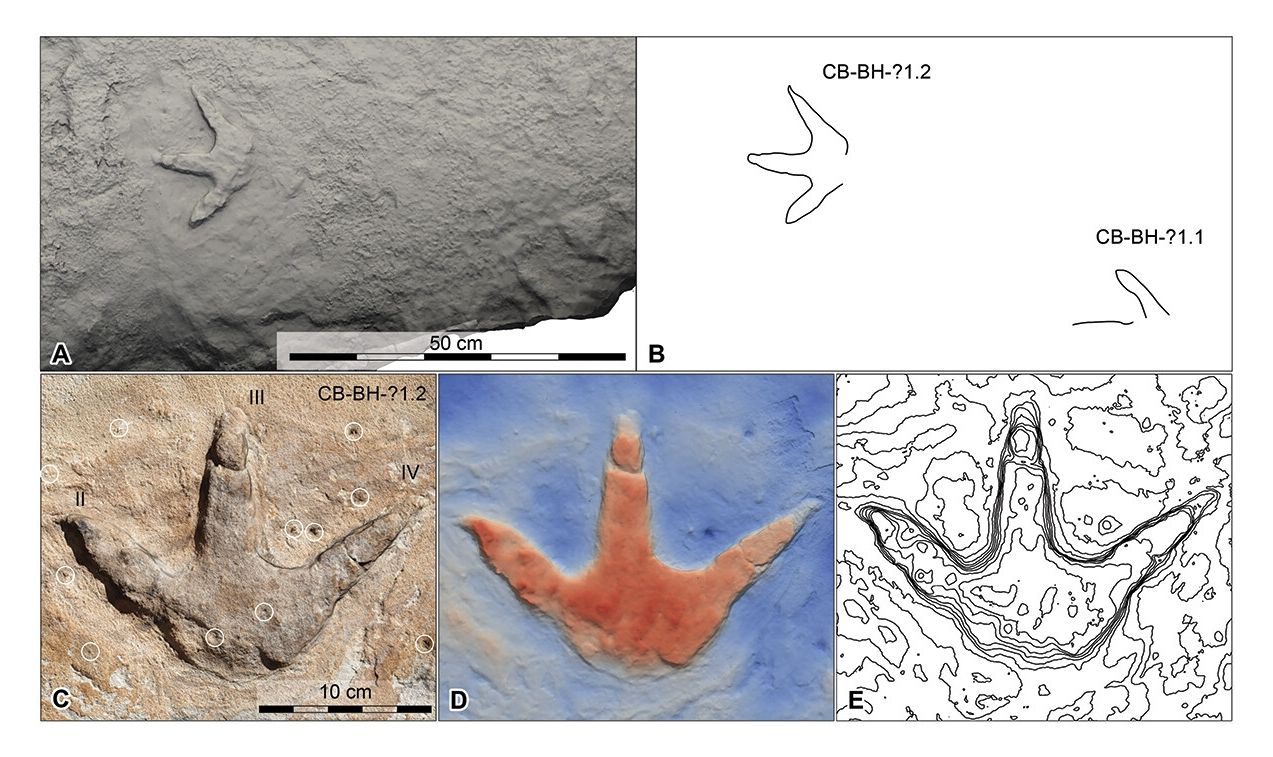Dozens of dinosaur footprints discovered... in a school 🐾
Published by Cédric,
Article author: Cédric DEPOND
Source: Historical Biology
Other Languages: FR, DE, ES, PT
Article author: Cédric DEPOND
Source: Historical Biology
Other Languages: FR, DE, ES, PT
Follow us on Google News (click on ☆)

A) Orthophotographic view of the ex situ surface.
B) Depth map (40 mm total).
C) Ambient occlusion shading.
D) Schematic interpretation. The inset shows the orientation of the footprints, with darker axes indicating a greater number of footprints. The lines between footprints represent continuous tracks. The small circles in (D) indicate circular structures, likely invertebrate burrows.
This discovery, made by Dr. Anthony Romilio from the University of Queensland, reveals 66 footprints left by 47 dinosaurs. These small herbivores, identified as Anomoepus scambus, crossed a muddy area, leaving behind traces of their movements.
A window into the distant past
The footprints, characterized by three distinct toes, attest to the presence of small bipedal dinosaurs. Their legs measured between 6 and 20 inches (15 to 50 cm), and their speed did not exceed 4 mph (6 km/h). These details, revealed through 3D imaging techniques, provide a better understanding of their behavior and environment.
No dinosaur skeleton fossils from this period have yet been found in Australia. These footprints therefore constitute a valuable source of information. They suggest that these dinosaurs were stocky herbivores with long legs, short arms, and a beak. This discovery fills a gap in Australia's fossil record.
The tracks were left in a muddy area, likely near a watercourse. This configuration indicates that these dinosaurs lived in a humid and vegetation-rich environment. Researchers have also identified holes in the rock, probably caused by burrowing invertebrates, adding another dimension to the reconstruction of this ancient ecosystem.
A fortuitous discovery
The rock, donated to the school 20 years ago by a local mine, remained unnoticed for a long time. It was only after Dr. Romilio's work on similar footprints that its importance was recognized. These findings highlight the importance of re-examining old objects with modern techniques. They also remind us that scientific treasures can be hidden in unexpected places, such as a school or a parking lot. The use of advanced technologies, like 3D imaging, has revealed details invisible to the naked eye.

A) Ambient occlusion shading.
B) Schematic interpretation.
C) Orthophotographic view of the ex situ surface of the footprint. The small circles indicate circular structures, likely invertebrate burrows.
D) Depth map (15 mm total).
E) Contour map (1 mm increments).
In addition to the school rock, another two-ton block, used as a parking bollard, revealed two distinct footprints. These tracks, larger than those on the school rock, suggest the presence of a slightly larger dinosaur. These discoveries show that valuable clues about the past can be overlooked, even in places visited daily.
To go further: How do dinosaur footprints fossilize?
Footprints fossilize when animals walk on a muddy or clayey surface, which then hardens. If conditions are favorable, these tracks are covered by sediments and preserved for millions of years. Erosion or human activity can later reveal them.
For this process to work, several factors must come together. The surface must be soft enough to record the footprints, but not so soft that they disappear immediately. Then, rapid coverage by fine sediments is necessary to preserve the details of the track.
Environmental conditions also play a crucial role. Wet areas, such as riverbanks or floodplains, are particularly conducive to footprint fossilization. Once buried, layers of sediment protect the tracks from erosion and external disturbances, allowing their preservation over long periods.
Finally, the discovery of these footprints often depends on chance or human intervention, such as mining or construction work. These activities can expose ancient rocks, revealing fossilized tracks that would otherwise remain hidden.